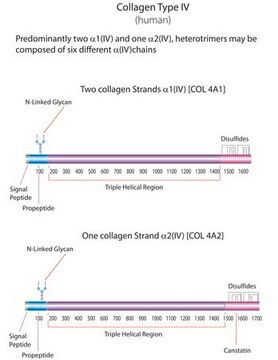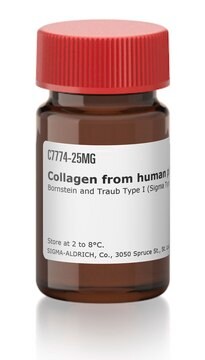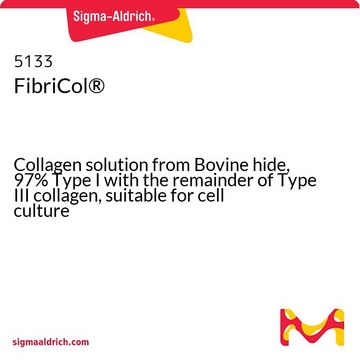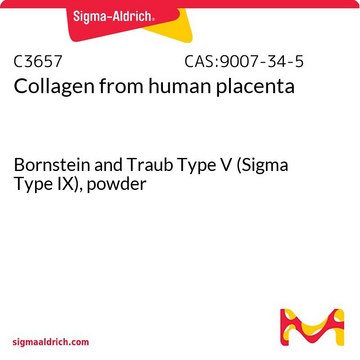H4417
Human Collagen Type IV
from human placenta, liquid, High Performance
About This Item
Prodotti consigliati
product name
Collagene, Bornstein and Traub Type IV, solution, suitable for cell culture, High Performance
Origine biologica
human placenta
Livello qualitativo
Forma fisica
solution
tecniche
cell culture | mammalian: suitable
Copertura della superficie
<5 μg/cm2
Impurezze
Endotoxin, tested
HIV, hepatitis B and hepatitis C, none detected
Temperatura di conservazione
−20°C
Informazioni sul gene
human ... COL4A1(1282) , COL4A2(1284) , COL4A3(1285) , COL4A4(1286) , COL4A5(1287) , COL4A6(1288)
Cerchi prodotti simili? Visita Guida al confronto tra prodotti
Applicazioni
Azioni biochim/fisiol
Tissue injury in the autoimmune disease Goodpasture syndrome is due to pathogenic autoantibodies targeting the Collagen IV α3 chain . Mutations in COL4A5 are associated with Alport syndrome.
Componenti
Avvertenza
Nota sulla preparazione
Altre note
Codice della classe di stoccaggio
11 - Combustible Solids
Classe di pericolosità dell'acqua (WGK)
WGK 1
Punto d’infiammabilità (°F)
Not applicable
Punto d’infiammabilità (°C)
Not applicable
Certificati d'analisi (COA)
Cerca il Certificati d'analisi (COA) digitando il numero di lotto/batch corrispondente. I numeri di lotto o di batch sono stampati sull'etichetta dei prodotti dopo la parola ‘Lotto’ o ‘Batch’.
Possiedi già questo prodotto?
I documenti relativi ai prodotti acquistati recentemente sono disponibili nell’Archivio dei documenti.
I clienti hanno visto anche
Il team dei nostri ricercatori vanta grande esperienza in tutte le aree della ricerca quali Life Science, scienza dei materiali, sintesi chimica, cromatografia, discipline analitiche, ecc..
Contatta l'Assistenza Tecnica.












